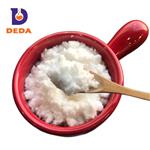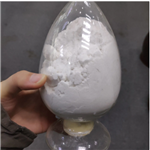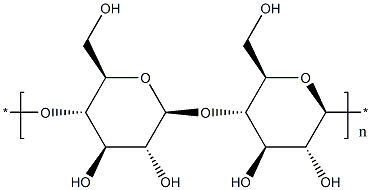Discover Multifunctional Hydroxypropyl Methylcellulose (HPMC)
Mar 7,2024
Hydroxypropyl methylcellulose (HPMC) is a remarkable compound, manifesting in a white or off-white powder form. Its versatility extends to various properties and applications, making it an indispensable ingredient across several industries. Let's delve into the multifaceted characteristics and applications of this unique substance.

1. Characteristics of HPMC
Water Retention: HPMC exhibits exceptional moisture retention capabilities, particularly on porous surfaces like cement boards and bricks.
Film Formation: It can create a transparent, resilient film with outstanding oil resistance.
Organic Solubility: HPMC is soluble in select organic solvents, including ethanol/water and propanol/water solutions.
Thermal Gelation: When heated, HPMC solutions gel, reverting to a solution upon cooling.
Surface Activity: It provides crucial surface activity, facilitating emulsification and phase stabilization in solutions.
Suspension: HPMC prevents solid particles from settling, thus impeding sediment formation.
Protective Colloid: It safeguards droplets and particles from coalescing or condensing.
Adhesion: HPMC serves as an excellent adhesive in various applications, including pigments, tobacco, and paper products.
Water Solubility: The solubility of HPMC varies with viscosity, with lower viscosity variants exhibiting greater solubility.
Nonionic Inertness: As a nonionic cellulose ether, HPMC does not form insoluble precipitates with metal salts or other ions.
Acid-Base Stability: It maintains stability within a pH range of 3.0-11.0.
Tasteless and Odorless: HPMC remains unaffected by metabolism, making it suitable for food and medical additives without providing calories.
2. Dissolution Methods
HPMC's dissolution can be achieved through various methods:
Hot Water Method: Utilizing hot water facilitates HPMC dispersion, followed by cooling for dissolution.
Powder Mixing Method: Dry mixing HPMC with other powdery ingredients before adding water prevents agglomeration.
Organic Solvent Wetting Method: Pre-dispersing HPMC in organic solvents like ethanol or oil before adding water aids smooth dissolution.
3. Main Uses
HPMC finds widespread application across industries:
Suspension Polymerization: Essential in stabilizing hydrophobic monomers in water-based suspension polymerization processes, enhancing polymer particle stability and porosity.
Building Materials Formulation: Used as an adhesive, caulking agent, and bonding agent in various construction materials, including gypsum-based tape, cement-based products, and structural plasters.
Paints and Coatings: Included in formulations for paints and paint removers, contributing to their performance and stability.
In conclusion, Hydroxypropyl Methylcellulose (HPMC) stands as a versatile and indispensable compound, offering a myriad of benefits across diverse applications. Its unique blend of properties makes it a cornerstone in industries ranging from construction to pharmaceuticals, showcasing its significance in modern manufacturing and development.
- Related articles
- Related Qustion
- What Can Modified Cellulose Be Used For? Feb 29, 2024
The term "modified cellulose" pertains to chemical modifications primarily aimed at the hydroxyl groups within the cellulose backbone. This article will introduce its applications.
- Application of Microcrystalline cellulose Mar 7, 2022
Microcrystalline cellulose (MCC) is mainly composed of β- 1,4-glucoside bonded linear polysaccharide [1] is a white, odorless and tasteless crystalline powder composed of free flowing short rod or pow
Tolvaptan can be used in many clinical situations resulting in hyponatremia, including congestive heart failure, cirrhosis, and syndrome of inappropriate ADH secretion (SIADH), including SIADH related to malignancies.....
Mar 7,2024APITazobactam is a beta-lactamase inhibitor antibiotic that prevents beta-lactamase-producing organisms from breaking down other antibiotics.....
Mar 7,2024DrugsMicrocrystalline cellulose
9004-34-6You may like
- The brief introduction of NADPH
Apr 29, 2024
- Nisin: Application, Mechanism of action and Side effects
Apr 28, 2024
- What is the primary function of NAD and FAD?
Apr 28, 2024
Microcrystalline cellulose manufacturers
- Microcrystalline cellulose
-

- $0.00 / 1kg
- 2024-04-29
- CAS:9004-34-6
- Min. Order: 1kg
- Purity: 99%
- Supply Ability: 500
- Microcrystalline cellulose
-

- $5.00 / 1kg
- 2024-04-29
- CAS:9004-34-6
- Min. Order: 1kg
- Purity: 99.5
- Supply Ability: 10 ton per month
- Microcrystalline cellulose
-

- $4.80 / 1kg
- 2024-04-29
- CAS:9004-34-6
- Min. Order: 1kg
- Purity: 99%
- Supply Ability: 300tons




